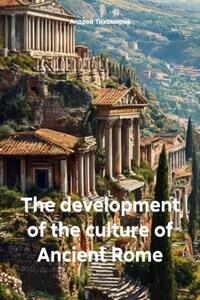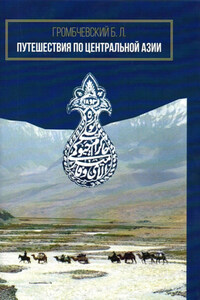The cultural traditions of the Etruscans (the Etruscans are a tribe of Indo—European origin that inhabited the territory of modern Tuscany), as well as the achievements of ancient Greek civilization, had the greatest influence on the formation of ancient Roman culture. Read in detail about the Etruscans: Tikhomirov A.E., Science confirms – 13. "Ridero", Yekaterinburg, 2022; and about the ancient Greek civilization: Tikhomirov A. E., From the history of Ancient Greece. LitRes, Moscow, 2025.
The Romans borrowed many religious beliefs and customs from the Etruscans, as well as the basics of construction techniques and the mastery of artistic metalworking. The Romans inherited from the Greeks a polis system of government, more advanced farming methods, and Greek art was revered as a model and sought to follow its canons. At the same time, the ancient Roman culture proved to be sufficiently distinctive and original.
The population of Ancient Rome during the Archaic period lived in clans in territorial communities – pagas. The inhabitants of pag had a common cult, treasury, and carried out joint labor activities. Archaic Rome was headed by the tsar, he had a senate, and the most important issues were decided by the national assembly. In 510 BC, the Roman Republic was formed, which lasted until the 30s BC. Then came the empire period, which ended with the fall of the "eternal city" in 476 AD.
A characteristic feature of the Roman Empire was universalism. Ancient Rome claimed to become an ecumenical state, coinciding in its scale with the entire civilized world. The Romans believed that it was the gods who ordered them to gain power over this world. The praise of Rome was framed in Titus Livy's monumental historical work "The History of Rome from the Foundation of the City", written in 142 books. The unique Roman value system was fully represented here.
In the 1st century BC, rhetoric, or the art of political and judicial eloquence, developed powerfully in Rome, which was a consequence of reflecting the turbulent social life of the transitional era from the Republic to the Empire. Achieving authority in society and a successful political career were impossible without a masterly command of the living word. Rhetoric becomes a stepping stone on the way to joining the Roman elite. Rome's most prominent speaker was Marcus Tullius Cicero (1st century BC). Being also a fine connoisseur of philosophy, he did a lot to introduce the Romans to the classical Greek philosophy of Plato and the Stoics.
It should be noted that Roman philosophy developed under the dominant influence of Hellenistic Greek philosophy. She used in her practice the scientific apparatus, terminology and main directions peculiar to Greek philosophical thought. At the same time, stoicism, epicureanism and skepticism became the dominant trends.
The life ideal of the followers of Stoicism was absolute peace of mind, equanimity, overcoming fear of the gods and death. One of the most prominent philosophers of this school, Lucius Annaeus Seneca (4-65 BC), taught in his philosophical and ethical treatises: everything that is external has nothing to do with us. In turn, it is philosophy that can heal our soul from excessive fascination with the outside world.
Epicureanism became the only materialistic trend in the philosophy of ancient Rome. Lucretius Carus (96-55 BC), a prominent representative of epicureanism, in his poem "On the Nature of Things", explaining everything that exists in a materialistic way, set a goal for himself – to help a person find peace of mind and free his mind and feelings from fear and superstition.
The founder of skepticism, Sextus Empiricus (200-250 BC), questioned the possibility of knowing truth and reality. His teaching was aimed at a critical reassessment of all modern knowledge.
In addition to the theories listed above, mystical philosophical doctrines such as Neopythagoreanism, Neoplatonism, as well as Eastern religions and cults were very popular during the Roman Empire.
Roman art also has its own unique look. Although there is an Etruscan and Greek influence in the content of his works, they are an artistic expression of typically Roman ideological tendencies. This is especially true of architecture, where the desire for pomp and splendor finds its expression in the construction of triumphal arches, squares (forums), temples, theaters, bridges, aqueducts, markets, hippodromes, etc. At the turn of the III—II centuries BC, durable Roman concrete was invented, the use of which made it possible to carry out a number of magnificent projects. A remarkable achievement of Roman architecture and construction techniques was the construction of the Colosseum's grand amphitheater and the building of the temple of all the gods – the Pantheon in Rome.
New types of housing are also being created:
villa – country houses for Roman patricians.;
domuses – city houses for rich Romans;
insulas are multi—storey houses for the poor.
In the second century, original public buildings appeared:














